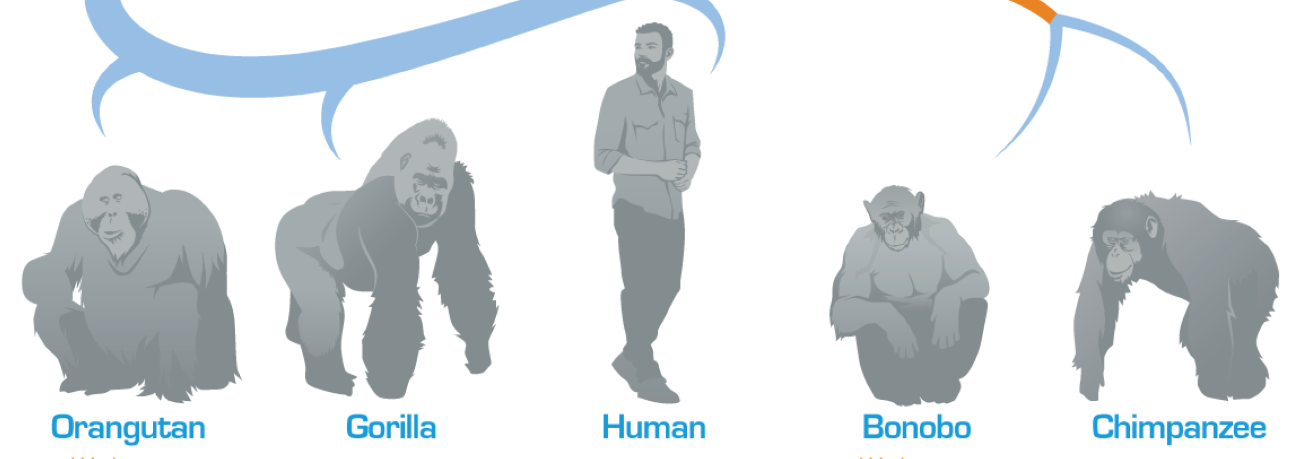Study Uncovers Swift Evolution of Y Chromosome in Apes (GS Paper 3, Science)

Context
- A groundbreaking study published in the journal Nature has shed light on the rapid evolution of the Y chromosome in primates, showcasing stark differences between humans and other ape species.
- Scientists have revealed that a mere 14–27% of Y chromosome regions in various ape species bear resemblance to those found in humans, indicating divergent evolutionary paths.
- In contrast, X chromosomes exhibit a striking similarity, with over 90% shared across species, signifying a remarkable stability over time.
Sequencing Ape Sex Chromosomes
- Researchers delved into the dynamics of sex chromosome evolution by sequencing the genomes of six distinct ape species, including bonobos, chimps, gorillas, orangutans (both Bornean and Sumatran), and siamang gibbons.
- Employing full sequencing akin to methodologies applied in human sex chromosome studies, scientists scrutinized structural disparities and evolutionary trajectories with unprecedented detail.
Comparative Analysis and Notable Disparities
- The divergence times between different ape species and human lineages vary significantly.
- For instance, the split between Bornean and Sumatran orangutans occurred approximately 1 million years ago, while the separation between humans and their ape ancestors transpired up to 20 million years ago.
- The heightened rate of change observed in the Y chromosome, attributed to its pivotal role in spermatogenesis, contrasts with the stability exhibited by the X chromosome.
- This divergence underscores distinct evolutionary pressures acting upon sex chromosomes.
Genomic Characteristics: Influence of Repetitive Elements
- A substantial proportion of the Y chromosome (71–85%) and the X chromosome (62–66%) comprises repetitive elements, including palindromes—sequences that read the same forwards and backwards.
- These palindromic structures harbor multiple copies of crucial genes, potentially serving as a mechanism to safeguard genetic information from damage, particularly vital for the Y chromosome, lacking a homologous match during cellular division.
Insight into Y Chromosome Evolution
Size and Composition:
- The Y chromosome, pivotal for male development, is considerably smaller than its X counterpart, containing approximately 50 million base pairs compared to the X chromosome's 150 million base pairs.
Evolutionary Changes and Genetic Stability:
- Over evolutionary epochs, the Y chromosome has undergone substantial gene loss, forfeiting 90% of genes originally shared with the X chromosome due to genetic degradation.
- However, recent studies unveil mechanisms facilitating gene repair via internal palindromic sequences, fostering self-recombination.
- Contrary to earlier conjectures regarding its demise, research indicates stabilization of the Y chromosome over the past 25 million years.
Species-Specific Evolutionary Variations:
- Notably, in certain species like the Japanese spiny rat and mole voles, the Y chromosome has been entirely lost, leading to alternative sex determination mechanisms.
- This emphasizes the diverse evolutionary trajectories observed in sex chromosome development across species.


